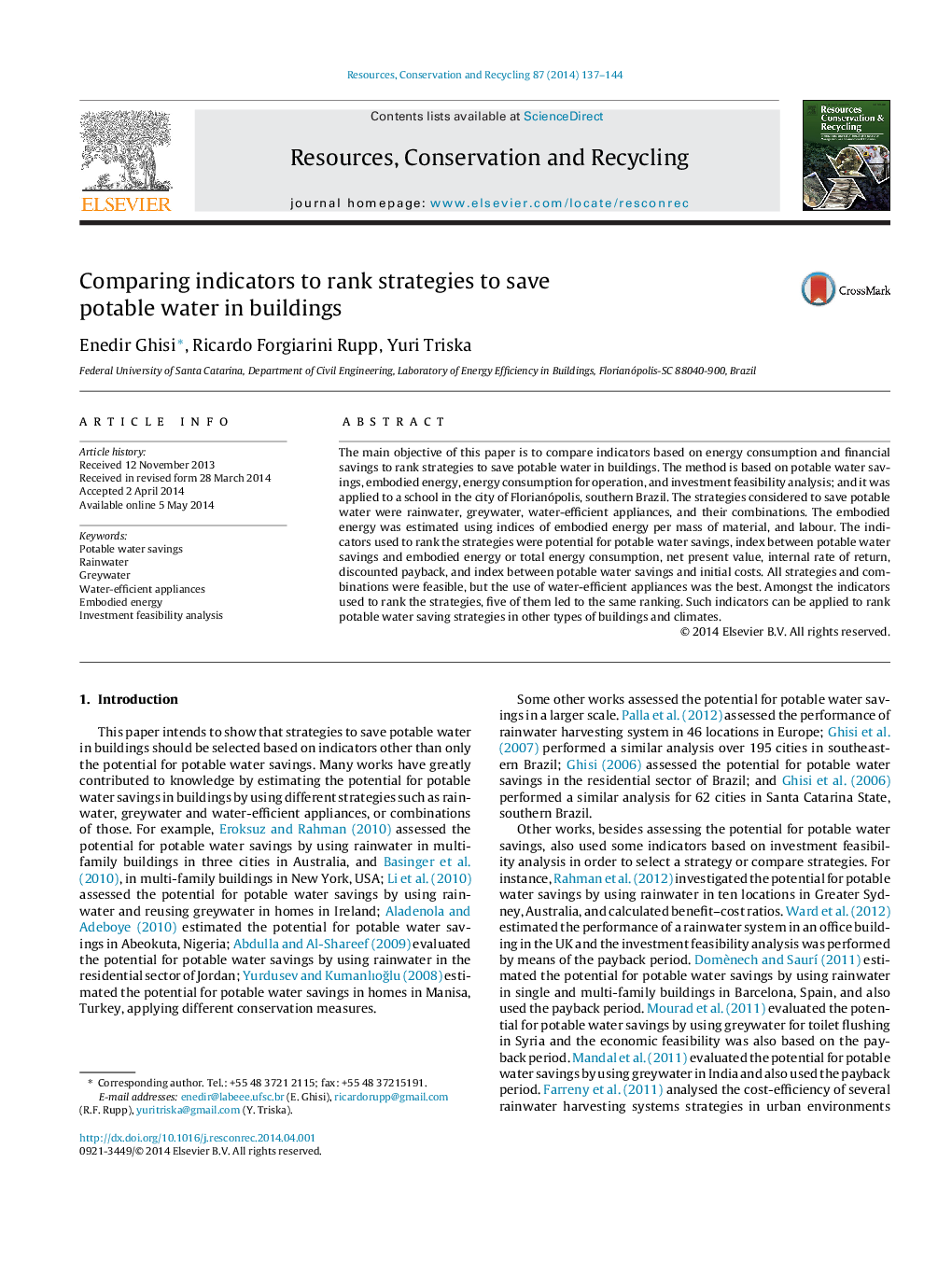| Article ID | Journal | Published Year | Pages | File Type |
|---|---|---|---|---|
| 1062913 | Resources, Conservation and Recycling | 2014 | 8 Pages |
•Compare indicators to save potable water in buildings.•Rainwater, greywater, water-efficient appliances, and their combinations were assessed.•All strategies and combinations were feasible.•The use of water-efficient appliances was the best strategy.
The main objective of this paper is to compare indicators based on energy consumption and financial savings to rank strategies to save potable water in buildings. The method is based on potable water savings, embodied energy, energy consumption for operation, and investment feasibility analysis; and it was applied to a school in the city of Florianópolis, southern Brazil. The strategies considered to save potable water were rainwater, greywater, water-efficient appliances, and their combinations. The embodied energy was estimated using indices of embodied energy per mass of material, and labour. The indicators used to rank the strategies were potential for potable water savings, index between potable water savings and embodied energy or total energy consumption, net present value, internal rate of return, discounted payback, and index between potable water savings and initial costs. All strategies and combinations were feasible, but the use of water-efficient appliances was the best. Amongst the indicators used to rank the strategies, five of them led to the same ranking. Such indicators can be applied to rank potable water saving strategies in other types of buildings and climates.
